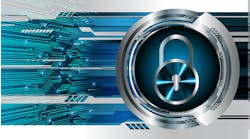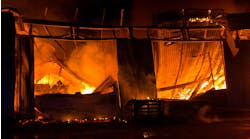A good example of the collision repair industry’s cooperation is the evolution of the ASE Collision Repair and Refinish Test Series, which debuted in 1975 as the B1–Body Repair and B2–Painting and Refinishing tests.
At that time, the single B1 test covered non-structural, structural and mechanical areas with 40 test questions. For more than 15 years, these were the only professional credentials available to collision repair technicians and painters. Through time, changing vehicle technology demanded a more extensive testing process, so in the early 1990s, the ASE board responded to industry requests to break the B1 into three new tests covering each area individually. Thus was born the collision series of ASE certification tests we know today, the B3–Non-Structural Analysis and Damage Repair; B4–Structural Analysis and Damage Repair; and B5–Mechanical and Electrical Components. (This also explains why there is no B1 test—the number was retired to avoid confusion.) In 1996, the B6–Collision Damage Analysis and Estimating was added, completing the current lineup.
ASE test development
To help better understand the true value of certification to the individual professional and the industry at large, it helps to know a bit about how the tests are created.
One of the initial concerns during ASE’s founding was whether written exams could be used to evaluate “hands-on” skills. After careful study, it was determined that written exams could be used, providing the following criteria was met:
- Exam questions must be based on job-skills knowledge.
- Full-time, professional, relevant work experience, in addition to a passing exam score, must be required for certification.
Of course, the requirements relating to standardized testing had to be incorporated to ensure validation of the testing process. Industry involvement and support is especially crucial to ensure relevance. In fact, a new ASE test or test series cannot be developed without a direct request and support from that specific industry segment. On new test development projects, ASE conducts a feasibility study and job analysis. If the results of that study are positive, the appropriate industry segments are asked to step up to the plate and supply subject matter experts to participate in the development workshops.
|
Pass all the ASE Collision Repair tests for 30% less! ENTER CODE : ART30 AT CHECKOUT |
These workshops involve recognized technical experts from the industry segment for the assigned test. There are normally 15 to 20 individuals in these groups, representing the perspectives of the technician, OEM, aftermarket, educator and shop-owner categories. It is important to note that about 40 percent of workshop participants are working technician and their role is vital in the process of creating questions and tests that adhere to ASE’s philosophy of job-skills related evaluation.
The first task of a workshop is to review or create the exam’s content area. This represents the major informational categories that will be encompassed by the test questions. All content-area categories are established during the initial stage of test development. The next step in the process is to develop the list of job skills that will further define a specific content-area category. As additional job-skills lists are developed to define the other content areas, the complete task list for the exam is formed. Only then can test questions be written. Because ASE questions are based on job-skills knowledge, the list of appropriate job skills or tasks, must be developed first.
Questions are written by individuals, or by small groups, at the workshops. Questions must have only one correct answer, but the other choices must be plausible enough to eliminate test candidates who are guessing. The complete workshop group must approve the questions as written, with those questions not making the grade being either rewritten or discarded. Although ASE staff members are present at these workshops, they act as facilitators only; they do not determine test content or write test questions.
On new tests, the number of questions that are required by the content area is doubled the first time the test is administered. In other words, if the test is composed of 40 questions, its initial debut will contain 80. However, only 40 questions will be scored, and these are selected based on the required content area of the test, plus the proper performance parameters that all questions must meet. This process is used so that the new test questions can be qualified and those not performing up to standards can be rewritten or eliminated. It also ensures that the candidates will only be evaluated using questions containing clear wording and only one correct answer. After this first test session, the new certification test returns to the normal length required by the content area.
The final industry duty involved with the test development process is for the passing score to be determined. Yes, the industry even sets the passing score for each exam. That is why it can be said that ASE exams truly represent industry standards.
Ongoing updates
Proper maintenance is a crucial factor in the quality of ASE certification. ASE tests are designed to be relevant, with questions that represent the actual repair procedures being performed by working technicians. To accomplish these goals, the initial design philosophy must be correct, plus the tests must be updated on a regular basis to reflect current technology. This update process is ongoing, occurring on approximately a two-year cycle, unless advances in technology dictate a more frequent schedule. Once again, the industry calls the shots. The Collision Series tests are updated every two to three years in workshops held across the country. Each workshop consists of 15 to 20 subject matter experts (SMEs) from various sectors of the collision repair industry. In case you’re wondering, the only test workshops where representatives from the insurers participate are the B6–Damage Analysis and estimating. The B2 thru B5 test workshops are attended by technical experts only, ranging from working collision repair technicians, shop owners, OEM reps, paint manufacturer reps, educators, and aftermarket equipment and material suppliers. Each workshop lasts three days and it is here that the test specifications and questions are created. In fact, every aspect of the ASE collision certification tests, from the content to the number of questions, is industry driven and industry maintained. As with the original development process, the test content is arrived at via a process of discussion to eliminate any potential biased or vehicle-specific questions that could give an advantage to one collision professional over another.
Once a test is established, any new or updated questions approved by the workshops are evaluated by embedding these questions in actual ASE exams. These “evaluation,” or “pre-test” questions do not count as a part of the score, and they are not identified, so the test candidates make their best effort to answer them correctly. This allows the question’s performance to be analyzed and identifies those with unclear wording or more than one correct answer. Questions that don’t measure up are rewritten or eliminated. Only after passing this rigorous evaluation are new questions added to the existing pool used to assemble the ASE collision tests.
Given this extensive industry involvement in creating the ASE tests, successful completion of an ASE exam demonstrates that an individual has the hands-on knowledge necessary to perform vehicle service to industry-standard levels. The ASE certification program could be described as the conduit through which certification by your industry and peers can be earned. Additionally, ASE’s five-year recertification requirement provides the opportunity for technicians to prove that they are staying current with technology.
Training and certification
Most test candidates are surprised to learn that ASE does not provide training for exam preparation. The reason that ASE does not train is because ASE certification would then only assess the training, instead of being an actual evaluation of the job-skills knowledge as deemed necessary by the industry. ASE does, however, provide a listing of the content area and task list for each exam, available to download free at the ASE Web site at www.ase.com. ASE leaves the training issue to be addressed by industry training organizations, like I-CAR and other continuing automotive service education (CASE) providers. You can find a list of ASE certified CASE providers at www.natef.org. In addition, some publishers, like ABRN, produce self-study guides to help as refreshers.
The collision repair industry is involved with ASE, and earning ASE certification is a personal accomplishment of which technicians, painters and damage estimators can be proud. It demonstrates that they are among the elite in their profession because they have proven that they possess the job-skills knowledge to meet the standards established by the collision repair industry.
Collision repair businesses benefit due to the professional image projected by ASE-certified technicians and the high degree of trust and recognition for ASE by consumers who encounter ASE-certified professionals more frequently when routinely maintaining or servicing their vehicles. ASE certification has become the cornerstone of many consumer-marketing programs, and ASE can provide the tools to help develop one.
|
Pass all the ASE Collision Repair tests for 30% less! ENTER CODE : ART30 AT CHECKOUT |
What’s in it for me?
There are many benefits to being ASE certified that go beyond the credentials and add even more value for professionals. For example, one of the tools ASE offers for career management is myASE, a section of the ASE Web site.
Using myASE, certified professionals can view their certification status and test history online. Professionals can also use myASE to update personal information such as mailing address, phone number, e-mail address and more. In the future, professionals will also be able to customize their ASE Internet experience according to personal expertise and preferences. There are no registration or subscription fees.
With Internet security at the top of everyone’s mind these days, myASE uses 128-bit SSL (Secure Sockets Layer) technology to ensure that private information is safe. When interacting with myASE, all information flows securely between the certified professional and the myASE Web site. To ensure compatibility, ASE encourages professionals to use Internet Explorer 5.5 Web browser or higher with the latest updates installed.
To qualify for an account with myASE, an individual must have registered for the ASE tests at some time in the past and have a valid e-mail address. Registration is handled entirely over the Internet. To register, professionals should visit the ASE Web site at www.ase.com and click on the Service Professionals category. All that’s needed is to click on myASE and follow the on-screen instructions. For security reasons, the registration process takes one business day for the account to become effective.
ASE certification has been approved by the Veterans Administration to allow veterans to file for reimbursement for the cost of the ASE tests. The new licensing and certification benefit allows the Department of Veterans Affairs to reimburse eligible technicians for the cost of each ASE test taken and, if necessary, the cost to retake a failed test. The VA will reimburse veterans for the cost of the test only, not registration fees or costs associated with preparation study materials.
Automotive professionals can receive this reimbursement if they are eligible for benefits under the Montgomery G.I. Bill, VEAP (also called Chapter 32), or Dependents’ Education Assistance (also called DEA or Chapter 35). To find out if you are eligible under any of these programs, check the VA Web site at www.gibill.va.gov. Veterans generally have 10 years after discharge from active duty to use these benefits. They also can get information on the program by calling (888) 442-4551. Hearing-impaired should call (800) 829-4833.
You can get all the information you need on these and other programs, along with details on all of the ASE certification tests at www.ase.com, or by calling ASE customer service at (703) 669-6600.



